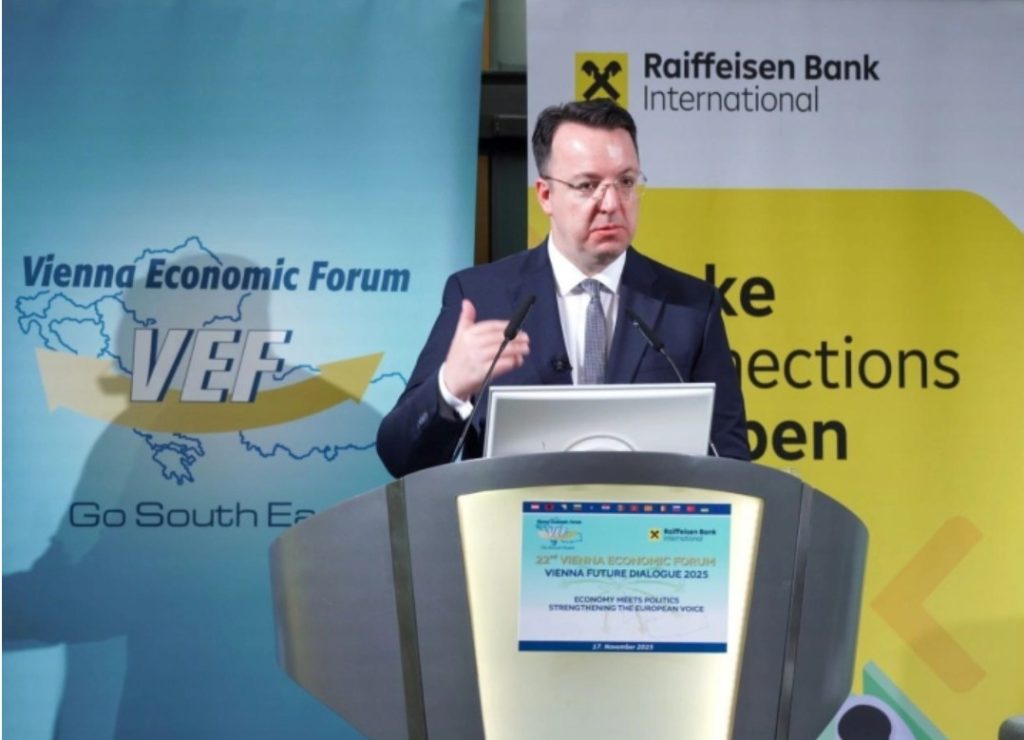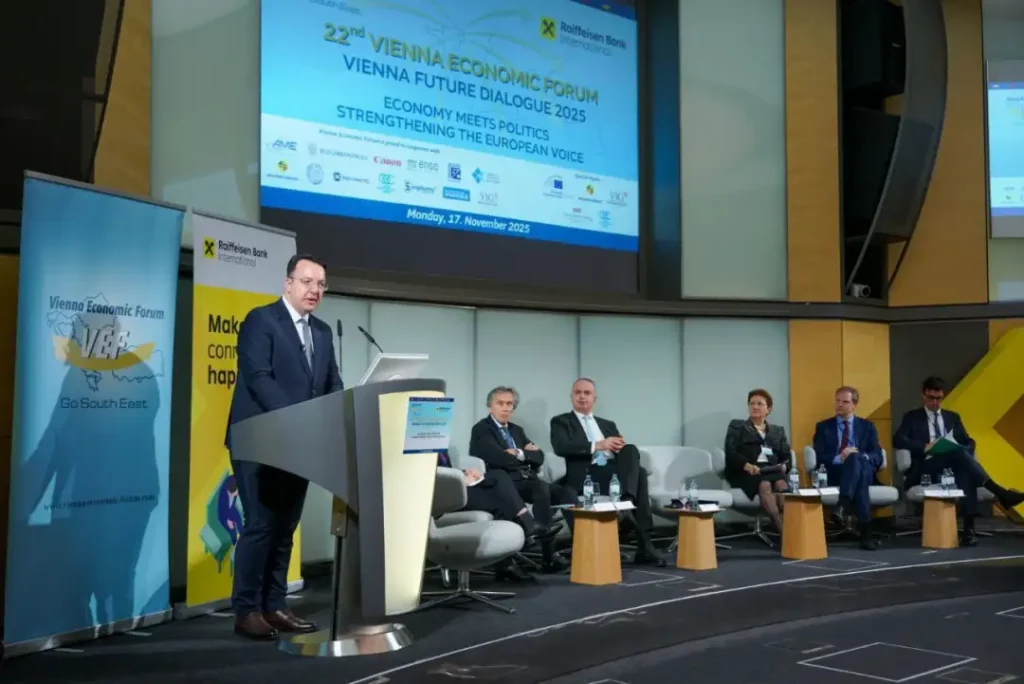
In Macedonia, we are currently implementing the biggest capital projects in the construction of road and railway infrastructure on the main transport corridors 8 and 10. We have a vision to contribute to regional development, economic stabilization and fast and reliable transport to Central and Southeast Europe through the development of infrastructure, said Deputy Prime Minister and Transportation Minister Aleksandar Nikoloski during a panel discussion at the Vienna Economic Forum.
Presenting the capital projects, he emphasized that Macedonia is working on the construction of new highways on Corridor 8, connecting border crossings, as well as the modernization of the highway Corridor 10. Nikoloski also emphasized that the challenge is the development of the railway network through the construction of the high-speed railway on Corridor 10, which will have a strong impact on international transport. He also spoke about the railway connection with Bulgaria on Corridor 8, on which he hopes that with the initiated activities, we will have a regular line from Skopje via Sofia to Burgas by 2031. He also presented plans for a railway connection with Albania.
Nikoloski said that the current Government, after being elected in June last year, adopted a very ambitious investment agenda and began developing Corridors 8 and 10, using the favorable geographical location even though it is landlocked. “We are lucky that one of the European corridors passes east of our capital Skopje, Corridor 10, the longest pan-European corridor that starts in Athens, and ends in Finland, and the second is Corridor 8, which connects the Ionian and Adriatic Seas with the Black Sea – the east-west corridor of Southeast Europe. This is a huge opportunity for us that we want to seize and we have started very ambitiously with the development of these corridors, said Nikoloski.

He pointed out that the condition of the highway section of Corridor 10 from the border with Serbia to the border with Greece is good, unlike Corridor 8, and its development has begun and that in addition to the built ones, highways are being built from the border with Albania to the border with Bulgaria. Work is also underway to reconstruct and upgrade the border crossings in order to reduce waiting times at the border crossings.
The total investment in highways and expressways on Corridor 8 will be around 1.5 billion euros, which for our economy is truly something huge and something that is significant. “We are also developing Corridor 10e – the corridor that shortens the distance between Athens and Skopje. If it currently takes eight to eight and a half hours to travel, this will shorten it to five to five and a half hours. On our side, we are building the largest highway ever built in the country, about 55 kilometers, and on the other side, the Greeks are also building, and that is the missing piece of the puzzle, so I hope that when you travel from Vienna to Athens, you will cut at least three hours with what we are building now”, Nikoloski said.
The railway, he pointed out, is a huge challenge for us, but at the same time a huge opportunity.
We have a vision that I spoke about very loudly when we were in opposition. I remember that when in 2022 Friends of Europe elected me as the most vibrant person under 40, and now unfortunately over 40, I spoke about this and it was a completely new story for most of the European metropolises, including Vienna. By developing the railway Corridor 10, the high-speed railway, we can shorten the time for supplying Europe from 21 to 24 days, Nikoloski said.
The only reason why the northern ports are used to such an extent, he explained, is because they have good infrastructure to central Europe. But if we manage to create a good infrastructure of the railway on Corridor 10, because it is the cheapest and fastest way to transport goods, the minister added, then that time can be shortened to 21 to 22 days. He said that larger vessels should stop in Athens and come to Vienna, and smaller ones in Thessaloniki and arrive here.
We have an ambitious program for the construction of a high-speed railway, passenger trains will run at 250 kilometers per hour, but what is important are the freight trains that will run at 140 kilometers per hour, with the longest possible trains that run across Europe at the moment, 750 meters long. There is already a high-speed railway between Athens and Solun/Thessaloniki, between Belgrade and Budapest, it will be operational from spring, Budapest-Vienna is more or less a good infrastructure and what we are missing is Belgrade-Nis-Skopje-Thessaloniki. We already have an agreement with our Greek friends, I met with the Deputy Prime Minister of Greece a month ago, they will build the part that is missing from their side, from Thessaloniki to our border, and we will start building our project in the spring of next year. It will be the largest project in Southeast Europe, although we are one of the smallest countries in that region. The investment will be around 2 billion euros, said Nikoloski.
He pointed out that for the implementation of strategic projects on transport corridors, the country has chosen Europe as a partner in the implementation.


 English
English
